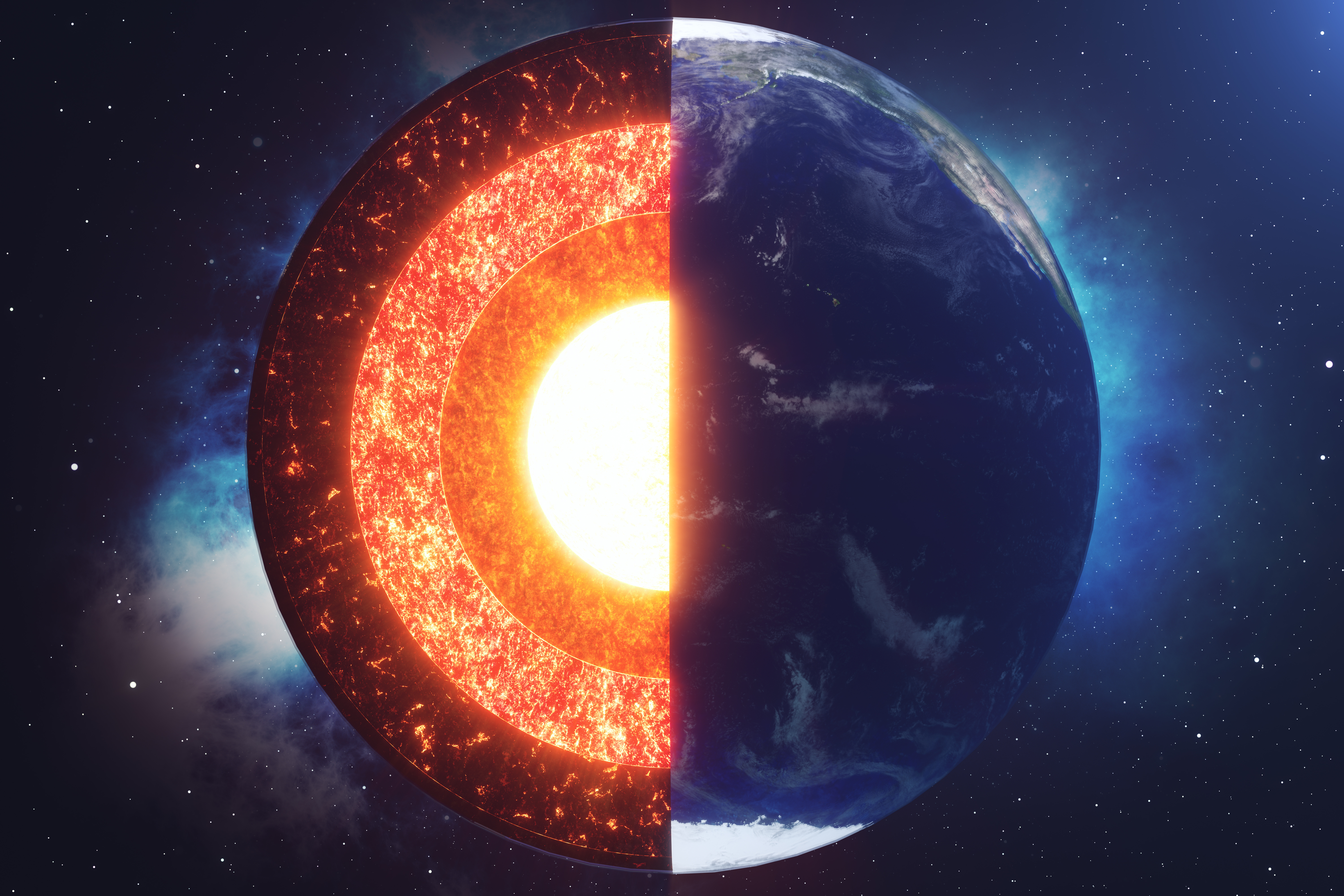There’s a lot that we don’t know about the Earth, like how was life on Earth created? But we also don’t know a lot about the makeup of the planet itself, like how old the Earth’s core is. A new study may turn everything we think we know about the Earth’s inner core on its head. Now researchers say the Earth’s core isn’t a solid compressed ball of iron alloy. But, it also isn’t a completely liquid core either. Instead, the new study proposes that the Earth’s inner core is a mushy mixture of elements such as silicon, carbon, oxygen, and hydrogen.
This new paper suggests the Earth’s inner core is a mushy mix of elements

The researchers published the paper in the journal Nature on February 9, and it offers an interesting look into the core of our planet. Initially, scientists believed the Earth’s inner core was composed of a highly compressed ball of solid iron alloy. However, the findings showcased in the paper seem to point towards something different.
First, the researchers note that understanding the Earth’s inner core is difficult for several reasons. Chief among these is the fact that seismological observations have shown a complicated structure that seems to make little sense. One of the currently unresolved problems with understanding the Earth’s core is that it features a low shear-wave velocity that is unmatched by the sound velocities found in iron and iron alloys. This has led the researchers to believe that the core also includes light elements that lend themselves to a superionic state, rather than a solid state. The researchers used computer simulations to try to understand what the core is made of.
“Using ab initio molecular dynamics simulations, we find that hydrogen, oxygen, and carbon in hexagonal close-packed iron transform to a superionic state under the inner core conditions, showing high diffusion coefficients like a liquid,” the paper reads.
Models and more studies

Another study conducted in 2021 seems to suggest the same thing. In that study, researchers sent seismic waves through the core of the planet. Those waves, called shears, found that the Earth’s inner core isn’t completely solid iron. Instead, it’s more of a mushy substance.
Of course, there’s no real way to tell exactly what the Earth’s inner core is without seeing it for ourselves. Unfortunately, sending a probe that deep into the Earth is impossible. That’s why the researchers focused on computer simulations for their latest study. The results from those simulations showed that the Earth’s inner core may instead consist of hardened iron. This superionic alloy would then allow other elements to slosh around it. Essentially, the core would feature both solid and liquid states, making it even more complicated than we previously imagined.
If these theories prove true, it could help us understand a lot about why the Earth’s core seems to change constantly. The model could shed light on how the planet generates its magnetic field, too. Of course, the scientists will need to prove the model first. And that means waiting for the perfect moment to run more experiments and test their outcomes.
For now, it is interesting at least, to think of the Earth’s inner core sloshing around a latticework of superionic alloy. A constant current of molten liquid moving within our planet.








